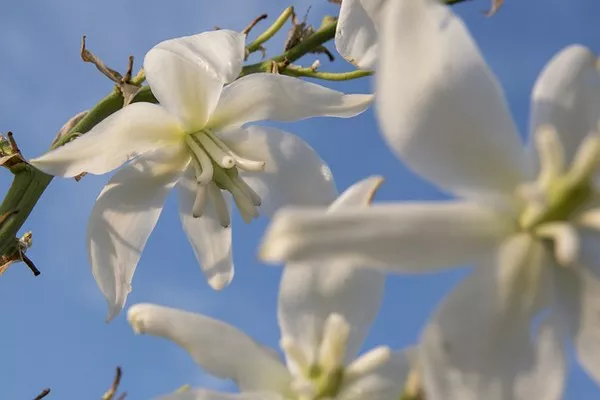Yucca plants, renowned for their striking appearance and resilience, have become popular choices in both indoor and outdoor landscaping. With their sword-like leaves and impressive flower spikes, yucca plants add an exotic and architectural touch to gardens, homes, and public spaces. Understanding the growth patterns of yucca plants is crucial for cultivating and maintaining these unique plants successfully.
Introduction to Yucca Plants
Yucca plants belong to the Asparagaceae family and are native to arid regions of North and Central America. Their ability to thrive in harsh environments, characterized by low water availability and high temperatures, has made them adapted to various climates, including deserts and coastal areas. Yucca plants are diverse, encompassing numerous species and varieties, each exhibiting distinct growth characteristics.
Growth Factors and Environmental Requirements
To cultivate yucca plants effectively, it’s essential to consider their growth requirements. Yuccas flourish in well-draining soil with a slightly acidic to neutral pH range. Their roots are susceptible to rotting if exposed to excessive moisture, underscoring the importance of soil drainage. When planting yucca outdoors, selecting a sunny location is crucial, as these plants demand ample sunlight to thrive.
Indoor yucca cultivation requires mimicking their natural habitat’s conditions. Placing potted yucca plants near south-facing windows can provide the necessary sunlight exposure. Moreover, regulating indoor humidity levels and avoiding overwatering is pivotal, as yucca plants are well-suited to arid environments.
Growth Phases of Yucca Plants
The growth of yucca plants can be divided into several distinct phases, each contributing to the overall development of the plant.
1. Germination and Early Growth
Yucca plants typically begin their life cycle from seeds. During the germination phase, the seeds absorb moisture from the soil, initiating the growth process. At this stage, the plant develops a primary root and a young shoot, which will eventually form the plant’s stem and leaves.
2. Leaf Formation and Maturation
As the yucca plant grows, it produces a series of leaves arranged in a rosette pattern. These leaves are characterized by their rigid, sword-like shape and their ability to store water, which helps the plant survive in arid conditions. Leaf production occurs from the plant’s center, with older leaves gradually moving outward as newer leaves emerge. The maturation of leaves contributes to the plant’s overall size and aesthetic appeal.
3. Flowering
One of the most captivating aspects of yucca plants is their unique flowering behavior. Yuccas produce towering flower spikes that bear clusters of bell-shaped flowers. Flowering typically occurs during the plant’s adult phase, which can take several years to reach, depending on the species and growing conditions. Interestingly, yucca plants often have a symbiotic relationship with yucca moths, which are responsible for pollinating the flowers. The moth lays its eggs in the flowers, and in return, the yucca plant provides a place for the moth larvae to develop.
4. Reproduction and Offsets
Yucca plants also have the ability to reproduce asexually through offsets, also known as pups. These offsets are young plants that develop at the base of the mature plant. Over time, they grow and form their root systems, eventually becoming independent plants. Propagating yuccas through offsets is a common method used by gardeners to expand their yucca populations.
Factors Affecting Growth Rate
The growth rate of yucca plants can vary significantly based on a range of factors.
1. Species and Variety
Different yucca species exhibit varying growth rates. Some species may grow relatively quickly and reach maturity within a few years, while others may have a slower growth rate and take several decades to flower.
2. Environmental Conditions
Environmental factors, such as sunlight, temperature, and water availability, play a crucial role in determining the growth rate of yucca plants. Adequate sunlight exposure and proper watering practices can accelerate growth, while unfavorable conditions may hinder development.
3. Soil Quality
The quality of the soil in which yucca plants are planted directly impacts their growth rate. Well-draining soil with good nutrient content can promote healthy root development and overall growth.
4. Care and Maintenance
Regular maintenance practices, such as pruning dead leaves and providing occasional fertilization, can positively influence the growth rate of yucca plants. Pruning not only improves the plant’s appearance but also redirects energy towards new growth.
Tips for Successful Yucca Plant Growth
For gardeners and enthusiasts looking to cultivate yucca plants successfully, several tips can contribute to optimal growth:
1. Choose the Right Species
Selecting a yucca species that is well-suited to your climate and growing conditions is essential. Some species are more tolerant of cold temperatures, while others thrive in hot, arid environments.
2. Provide Ample Sunlight
Yucca plants are sun-loving species. Ensure they receive at least 6 to 8 hours of direct sunlight daily for optimal growth and flowering.
3. Practice Proper Watering
Yucca plants are drought-tolerant and prefer infrequent, deep watering rather than frequent shallow watering. Allow the soil to dry out between waterings to prevent root rot.
4. Maintain Well-Draining Soil
Plant yucca in well-draining soil to prevent waterlogged roots. Consider adding sand or gravel to improve drainage if necessary.
5. Prune as Needed
Removing dead or yellowing leaves not only improves the plant’s appearance but also prevents potential pest and disease issues. Be cautious while pruning, as the leaves can be sharp.
6. Fertilize Wisely
Yucca plants generally do not require heavy fertilization. Applying a balanced, slow-release fertilizer once or twice a year during the growing season is sufficient.
Conclusion
The growth patterns of yucca plants are a testament to their adaptability and resilience in challenging environments. From germination and leaf formation to flowering and reproduction, each phase contributes to the plant’s unique appearance and character. By understanding the factors that influence yucca plant growth and implementing proper care practices, gardeners and enthusiasts can enjoy the beauty and exotic charm of these remarkable plants in a variety of settings, be it a desert landscape or a well-lit living room.


